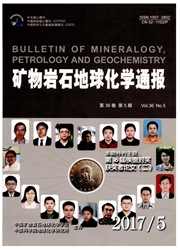

 中文摘要:
中文摘要:
对铜陵相思谷尾矿砂中的重金属在生物和非生物条件下的淋滤行为进行了研究。设置两个动态反应柱进行实验(实验柱填充尾矿砂+污泥+秸秆,对照柱仅填充尾矿砂,进水SO42-1000 mg/L,pH 7.5)。结果表明,实验初期(0~20 d)实验柱出水重金属浓度明显高于对照柱,归因于柱内微生物加速了矿物分解和重金属的淋滤;此后实验柱出水SO42-浓度逐渐降低,同时Cu2+、Cd2+、Zn2+、总Fe浓度分别降至0.1 mg/L、0.1 mg/L0、.4 mg/L和1 mg/L以下。据此推测,实验柱中出现了微生物作用下的硫酸盐还原作用,生成了可以吸持重金属的硫化物沉淀。研究结果表明,以稻草为碳源、污泥为微生物接种源构建尾矿砂-微生物体系,能够有效还原硫酸盐并去除重金属,该方法可以用于矿山尾矿的原位修复。
 英文摘要:
英文摘要:
In this study,the behaviors of heavy metals in skarn tailings of Xiangsi Valley Mine(Tongling,China)were studied by dynamic leaching experiments under both biotic and abiotic conditions.Two column reactors were designed,one was packed with mine tailings,sludge and straw(experimental column),and another was packed with mine tailings only(control column).The influent conditions were set as SO2-4 1000 mg/L and pH 7.5.The results showed that the concentrations of heavy metals in the effluent of the experimental column were higher than those in the effluent of the control column in the early 20 days,indicating that microbes have accelerated the decomposition of minerals and,accordingly,enhanced the leaching of heavy metals.After 20 days,the sulfate concentrations decreased gradually and the concentrations of Cu2+,Cd2+,Zn2+ and total iron dropped to 0.1,0.1,0.4 and below 1 mg/L,respectively.Sulfides with large amounts of heavy metals were also formed during this stage.These phenomena indicated that the microbial related sulfate reduction occurred and the heavy metals containing sulphides precipitated in the experimental column.The treatment system with straw as carbon source and sludge as microbiology source is considered as an efficient system in remediating mine tailings.
 同期刊论文项目
同期刊论文项目
 同项目期刊论文
同项目期刊论文
 期刊信息
期刊信息
